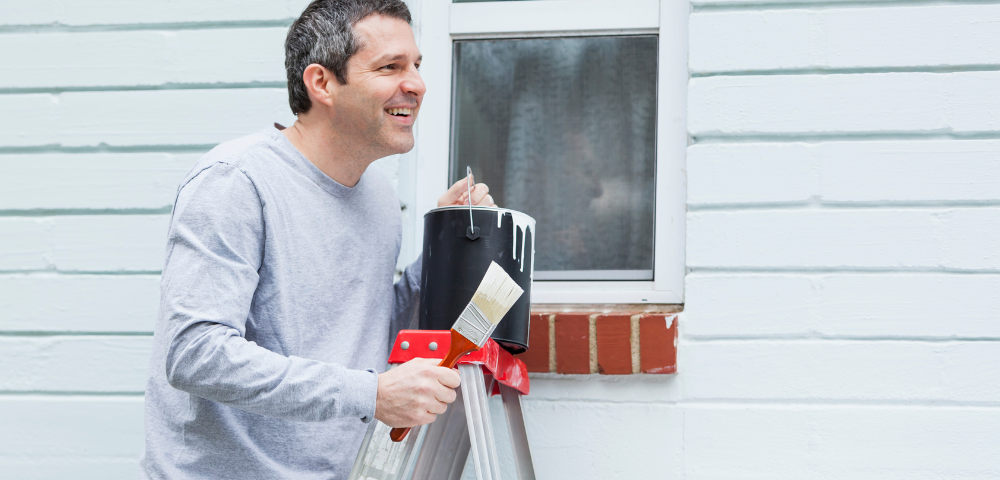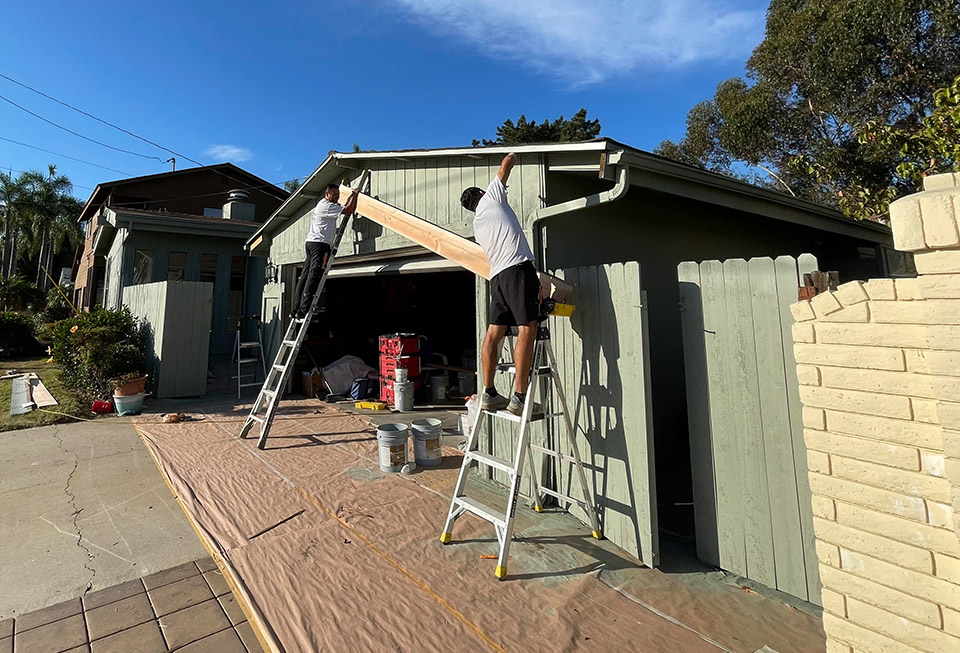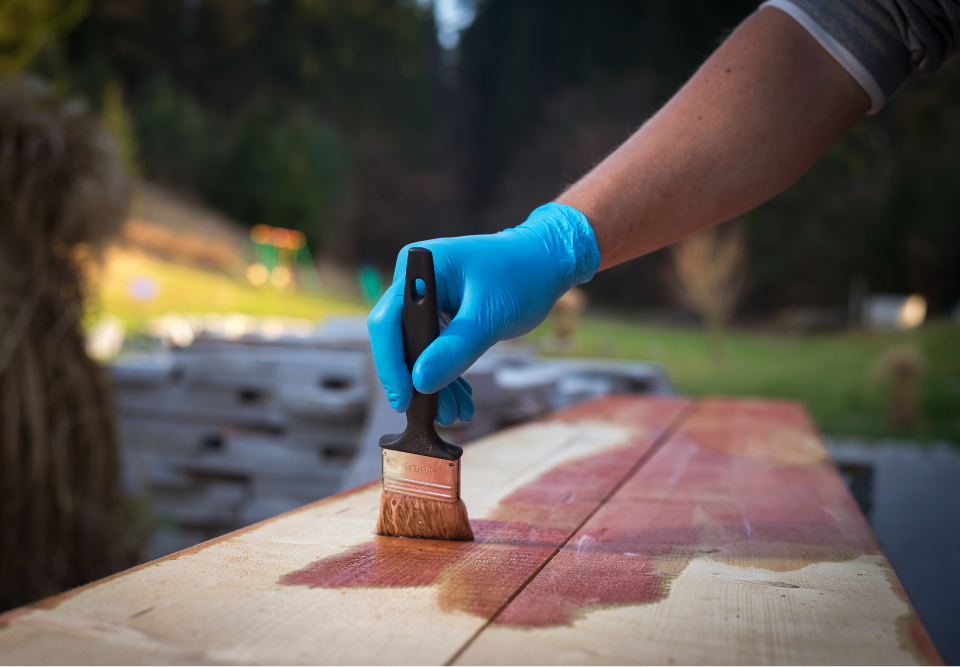
J Brown Painting is a neighborhood favorite!
August 30, 2022
Instances when you should consider calling an interior house painter
September 8, 2022Although it doesn’t snow in San Diego, it can be affected by some serious rain and wind in February and December. Cold rains and harsh wind conditions can negatively impact the exterior of your home over time.
Although exterior paints are designed to withstand harsh weather conditions, the cold can still affect the paint on the exterior of your home.
You can, however, take certain measures to maintain the integrity of the exterior paint job of your home.
How does cold weather affect the exterior painting of houses?
Before we dive into the measures you can take, the following are the ways cold weather can affect the exterior painting of houses:
Paint is likely to crack, peel, and fade
Temperatures below 50℉ are likely to cause paints to peel, crack, and fade. Lower-quality paints will tend to speed up the damage under cold temperatures.
Paint damage which leads to moisture build-up
During the rainy season, moisture is likely to seep through even the tiniest cracks and create build-up, which can lead to unsightly water damage on the exterior of your home.
Paint tends to get brittle
Molecules in paint tend to crystalize as temperatures drop. This tends to make the paint on walls less elastic and more brittle, which in turn means there’s a higher chance of it chipping.
Paint tones may change
In cold temperatures, dark paint colors can turn white or look frosted. This isn’t permanent, however, and the original paint color is restored as soon as temperatures begin to rise.
What should you avoid doing to your exterior walls during cold weather?
Refrain from attempting to paint or repaint your exterior walls when temperatures drop. Painting the walls of your home should only be done in favorable weather conditions. If not, due to the cold weather:
- The paint isn’t likely to ‘stick’ to the walls as it’s not able to bond properly with the surface. This can lead to minimal coverage of your walls and sometimes even paint streaks instead of a smooth finish
- The paint tends to dry a lot slower. This will lead to your paint not forming a protective, hard coating over the walls as it should
How can you lessen the effects of cold weather on your exterior paint job?
While you can’t control the weather, you can choose to control how it can impact the exterior of your house. Here are some tips that you can follow for a more durable paint job:
- Repair all wall damages no matter how small; make it a point to scrape off any old paint and debris in any crevices
- Use high-quality paints that are suitable for cold weather conditions and protect against moisture build-up
- Track the weather; if cold winds or rains are predicted, refrain from painting in these conditions
- Apply at least two coats of paint, giving each coat of paint adequate time to dry before applying the next
How can a professional paint contractor help?
With their levels of expertise and experience in painting in various weather conditions, professional painters may follow a couple of key practices before tackling the exterior painting of houses in cold weather.
For a durable paint job, measuring the temperature of the surface before painting is crucial. Professionals will use an infrared thermometer to precisely measure the temperature. If the surface temperature is below 50℉, they’ll refrain from painting the surface.
Why you should hire an expert for the exterior painting of houses
A professional paint contractor is equipped with top-of-the-line paints and tools that can guarantee a perfect, long-lasting paint job despite the elements of nature.
Hire the right exterior painting service in San Diego to prevent cold, harsh weather conditions from affecting the exterior of your home.



